- JP
- EN
Increasing the Energy Efficiency of Vessels
Wind Challenger
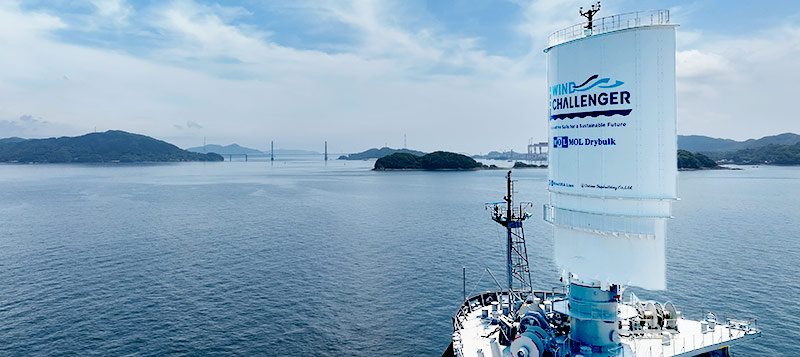
The Wind Challenger is a wind assisted propulsion system developed by MOL. It consists of one or multiple rigid sail(s) that is/are automatically controlled according to wind conditions. The rigid sails are automatically extended and retracted after departure and during port entry respectively.
After more than 10 years of research with academic and industrial partners, MOL has achieved significant weight reduction by using composite materials (glass fiber reinforced plastic) for large majority of the components for the first time in the world for equipment installed on large oceangoing merchant vessels.
In October 2022, the first merchant vessel equipped with the Wind Challenger, "Shofu-Maru," was completed commissioning and has since proven its high fuel-saving effectiveness in merchant voyages. The second vessel equipped with the Wind Challenger was put in operation in July 2024.
Not only in the following wind, the Wind Challenger can generate thrust force in the sideward winds and even in close to the headwinds. When a single sail of the Wind Challenger is installed on a 100,000-ton deadweight bulk carrier, it was confirmed to be able to reduce GHG emissions by about 5 to 8% in average compared to a vessel of the same type without sails. Additionally, installing multiple sails of the Wind challenger can further enhance the GHG reduction effect.
MOL is developing optimized ship designs with multiple sails of the Wind Challenger, and working on further improvements of the system. MOL also continues installation of the Wind Challenger on its own fleet and introduction to the market.
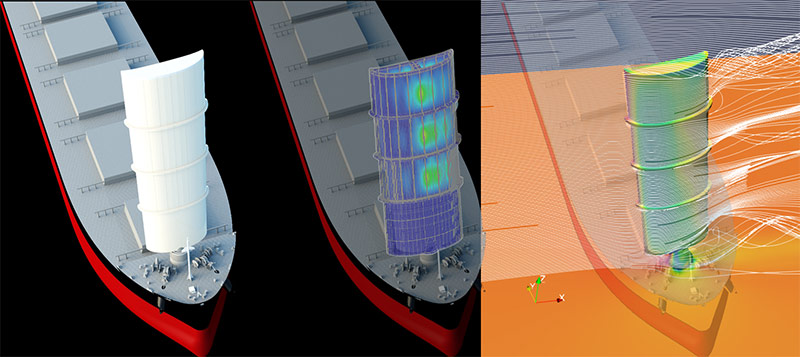
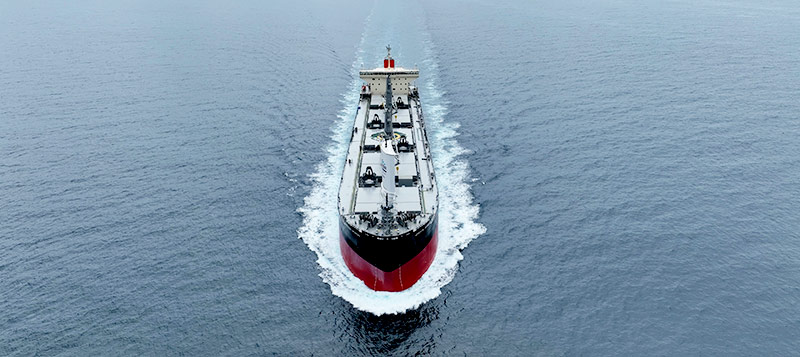
PBCF
The PBCF (Propeller Boss Cap Fins) was jointly developed by Mikado Propeller (now Nakashima Propeller), Nishi-Nihon Fluid Engineering Laboratory, and MOL. Since its commercialization in 1987, it has been installed on over 4,300 vessels worldwide and is recognized as an energy-saving device for ships.
Development of PBCF was one of the pioneers of successful technological development and innovation projects of MOL, which applied the stage-gate process to proceed the development as identifying the challenges and confirming the results of the development stage by stage while controlling the risks of the research and development. Despite initial internal debates on whether or not a shipping company should actively be involved in a technological development of a ship device, the project successfully progressed its development and achieved its commercialization.
The simple structure of the PBCF allows for approximately 5% fuel savings at the same speed. Furthermore, it also reduces propeller torque, stern vibration, underwater noise, and resolving erosion of a rudder.
The performance of the PBFC has been well proven by the delivery record of the PBCFs over the years to the application of various types of vessels with different horsepower, and by the speed trials and analysis of actual voyage data on more than 100 vessels.
In 2017, the design of PBCF was upgraded for further improvement of the performance. Since the new design was released to the market, it has already marked over 900 orders.
The project is a monumental achievement and a testament to MOL’s spirit of innovation and our relentless endeavor to reduce GHG emissions from our vessels.

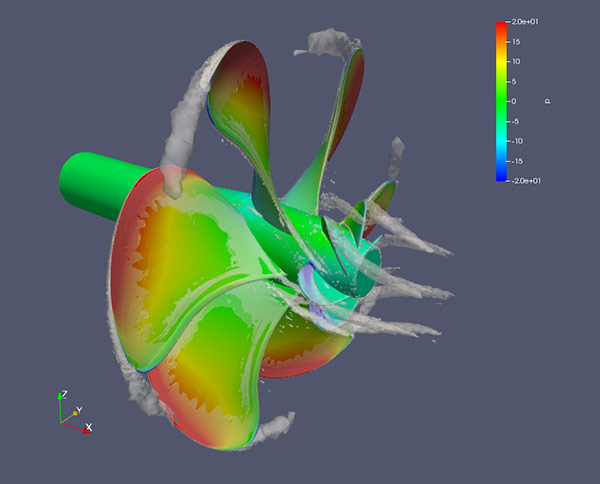
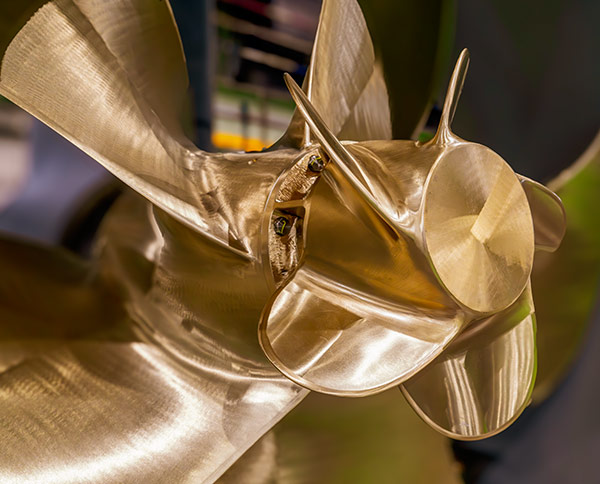
Long-Range Wind Measurement Device
MOL and Metro Weather Co., Ltd. ("Metro Weather") are conducting demonstration experiments by installing Metro Weather's Doppler Lidar, a long-range wind condition measurement device, installed on the RORO vessel "MUSASHI MARU" owned by MOL's group company, MOL Sunflower Ltd.
MOL developed a device that integrate Metro Weather's Doppler Lidar with an inertial navigation system to measure wind conditions while compensating for displacement due to ship movement and motion, enabling wind measurement even in the special environment of vessels.
The "Onboard Wind Measurement Device," which integrate Doppler Lidar and an inertial navigation system, is expected to enhance the safety of navigation through accurate wind condition predictions and to be utilized in various fields, including our "Wind Challenger Project" and "Wind Hunter Project," as well as our wind energy-related businesses.
MOL's corporate venture capital, MOL PLUS Co., Ltd., has invested in Metro Weather, supporting technological innovation from multiple angles.
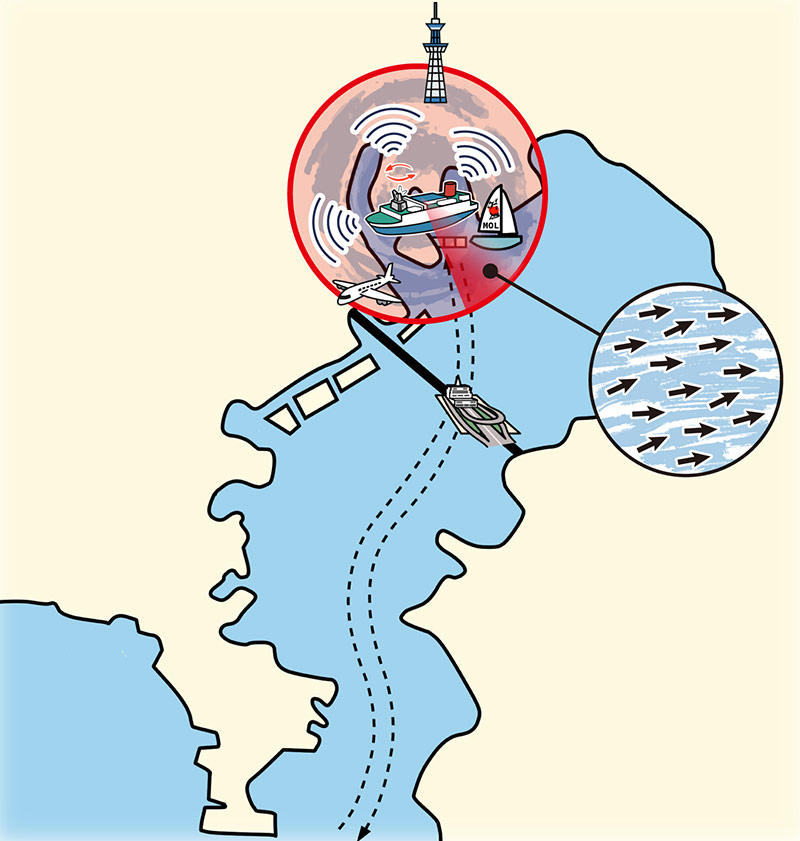
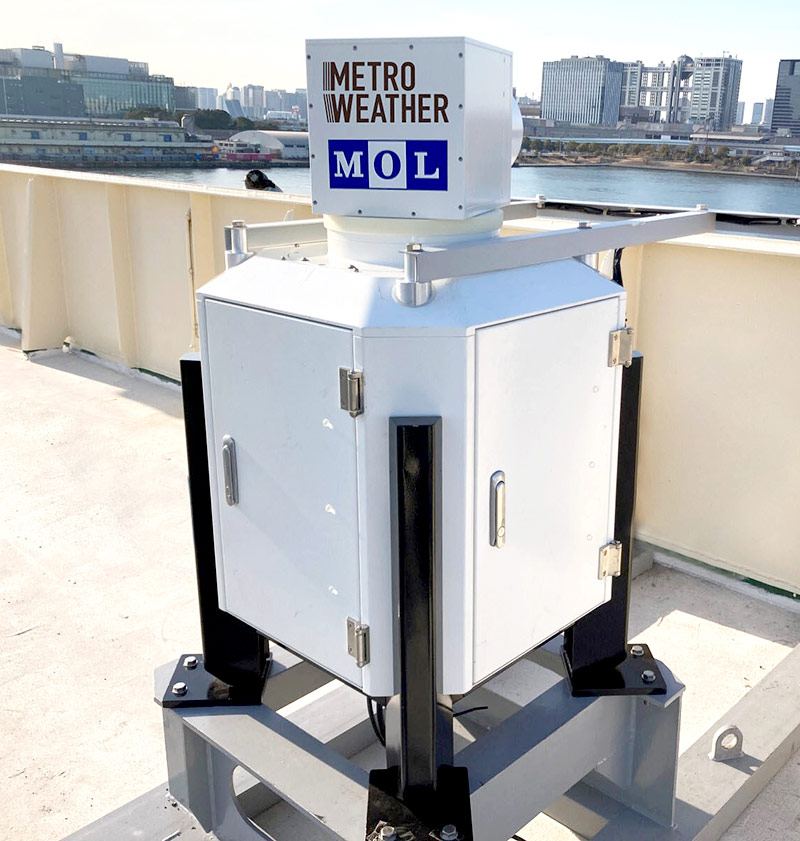
- Sustainability TOP
- Message from the Chief Sustainability Officer
- Sustainability
Management - Value Creation
Stories - Safety & Value
- Environment
- Human & Community
- Innovation
- Governance
- Stakeholder
Engagement - Sustainable Finance
- Sustainability Data
- ESG Disclosure
Guideline Indexes - External Recognition
- Library




